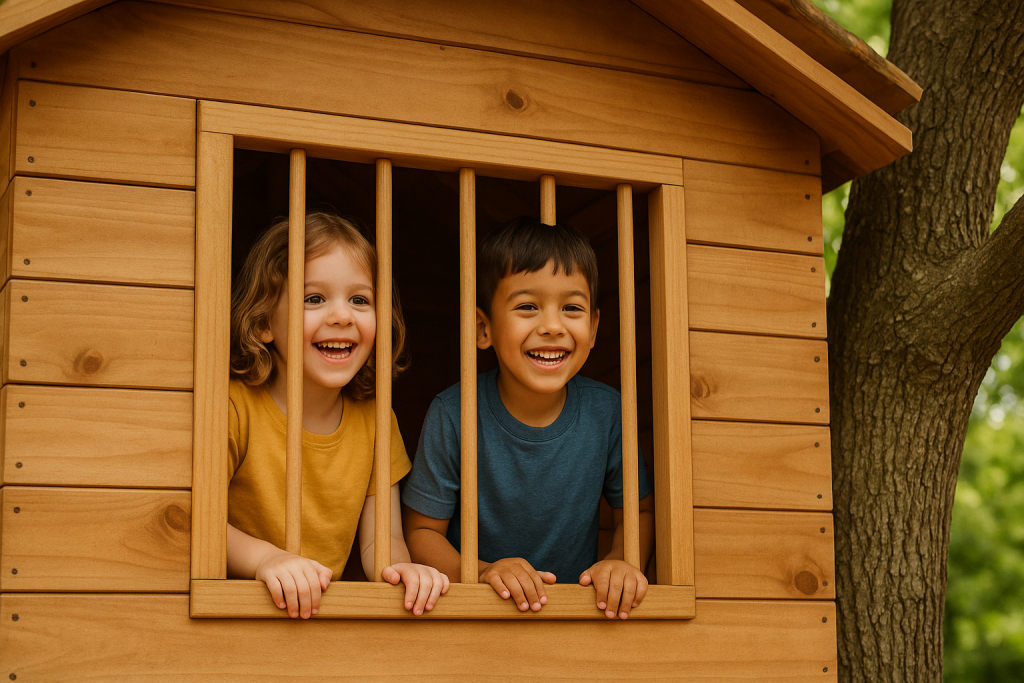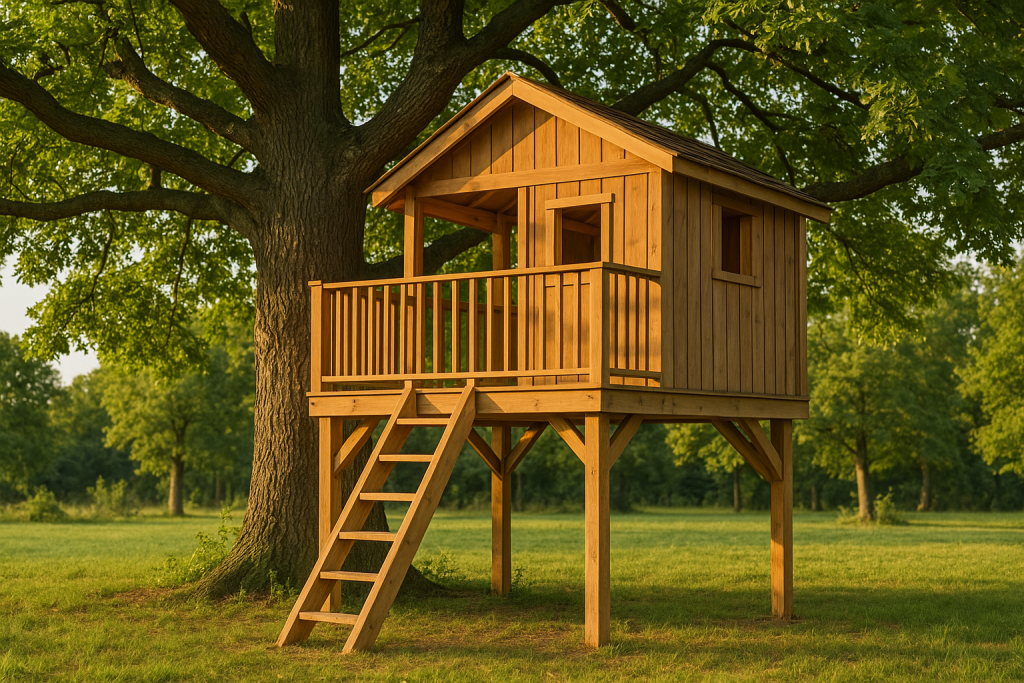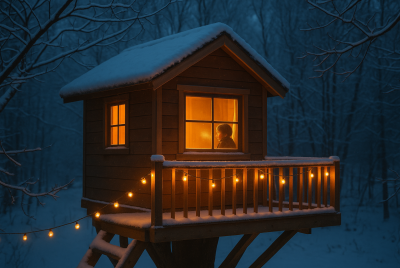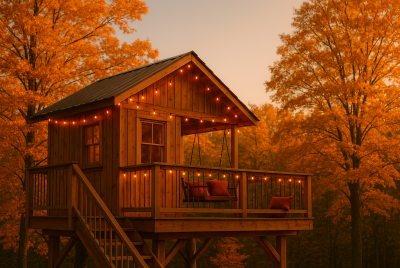Treehouse Safety Tips You Shouldn’t Skip
We may earn a commission for purchases made using our links. Please see our disclosure to learn more.
If you’ve ever built (or dreamed of building) a treehouse, you know the magic it brings. It’s not just wood and nails; it’s a childhood sanctuary, a little escape where imagination runs wild. But let’s be real—treehouse safety isn’t optional. A wobbly ladder, weak floorboards, or a poorly chosen tree can turn adventure into an accident.
That’s why today we’re diving deep into practical, research-backed, and family-tested tips to make your treehouse safe without sacrificing the fun. Think of this as me sharing advice over coffee, the kind of guidance I’d give my best friend if they were building a backyard hideaway for their kids.
Why Treehouse Safety Matters More Than You Think
Treehouses may look whimsical, but they’re elevated structures. A minor tumble from a height can still lead to significant injuries. Beyond physical harm, unsafe builds can leave kids (and parents) anxious instead of joyful. Safety sets the foundation for confidence and carefree play.
The First Step: Choosing Your Tree Wisely
The tree is your foundation. Pick wrong, and everything else wobbles.
Key things to look for:
- Strong hardwood species like oak, maple, or beech
- Trunk diameter of at least 12 inches
- No major signs of disease (fungus, hollow spots, or excessive dead branches)
- Deep root system to hold the weight
Height: How High Is Too High?
The golden rule: keep the floor under 8–10 feet from the ground for kids. Higher builds may look exciting but increase the risk of injury.

Solid Flooring Is Non-Negotiable
Think of the floor as the “ground” of the treehouse. Use ¾-inch exterior-grade plywood or pressure-treated decking boards. Add anti-slip outdoor mats for rainy days.
Secure Ladders and Entrances
A shaky ladder is like inviting an accident. Use:
- Angled wooden ladders with handrails
- Rope ladders (only for older kids)
- Sturdy staircase-style entries for maximum stability
Railings That Actually Protect
Anything over 3 feet high should have railings.
- Height: at least 36 inches
- Spacing: less than 4 inches between balusters (so kids don’t slip through)
Weather-Proofing the Structure
Rain, sun, and wind weaken wood over time. Use weather-resistant sealants and inspect yearly for cracks, warping, or rusted screws.
Weight Limits and Play Rules
Every structure has limits. Know the max weight your build can hold (kids + adults). Teach kids simple rules like “no jumping off” and “one person on the ladder at a time.”
Treehouse Safety Products Worth Having
Let’s talk gear. These Amazon finds can make your build sturdier, safer, and more kid-friendly.
1. Little Tikes Real Wood Adventures 5-in-1 Build & Play
- Modular design with sturdy wood
- Includes climbing ladder and safe slide
- Weather-resistant finish
✅ Pros: Easy to assemble, safe for younger kids
❌ Cons: Not customizable like DIY builds
2. Gorilla Playsets 01-1067-Y Outing Wood Swing Set
- Built-in treehouse-style fort
- Heavy-duty construction
- Includes swings and rock wall
✅ Pros: All-in-one outdoor play solution
❌ Cons: Requires large backyard
3. KidKraft Overlook Playset
- Enclosed treehouse design
- Comes with safety ladder and slide
✅ Pros: Great for smaller yards
❌ Cons: Limited expansion options
4. Backyard Discovery Skyfort II
- Multi-level fort with crow’s nest
- Durable cedar wood build
- Meets ASTM safety standards
✅ Pros: Extremely sturdy, holds multiple kids
❌ Cons: Higher cost
5. LOMILY Rubber Outdoor Stair Treads Non Slip for Wooden Steps (2-Pack)
- Heavy-duty waterproof rubber material
- Includes stainless steel screws for secure installation
- Slip-resistant diamond pattern design
✅ Pros: Durable, weatherproof, won’t shift easily
❌ Cons: Requires tools for installation, may need trimming for fit
Product Comparison Table
| Product | Best For | Pros | Cons |
| Little Tikes Real Wood Adventures | Younger kids | Easy setup, safe slide | Less customizable |
| Gorilla Playsets Outing | Families w/ big yard | Strong, all-in-one | Needs space |
| KidKraft Overlook | Small yards | Compact, enclosed | Limited upgrades |
| Backyard Discovery Skyfort II | Long-term build | Very sturdy, ASTM safe | Expensive |
| SafetyWorks Anti-Slip Treads | Add-on safety | Slip prevention, cheap | Wears over time |

Emergency Prep: Because Kids Are Kids
Keep a first aid kit nearby, teach kids how to call for help, and make sure the play area is visible from the house.
Involving Kids in Safety Rules
When kids help set the rules, they respect them more. Try this mini challenge: ask your kids to draw a “treehouse safety poster” and hang it inside.
Cultural Spin: Treehouses Around the World
- Japan: Often treated as meditative spaces for adults, not just kids.
- Costa Rica: Eco-tourism treehouses focus on sustainability and safety nets.
- U.S.: Backyard family projects, often DIY.
Safety is universal, even if the purpose of treehouses varies.
Research-Backed Insight
Studies show falls are the leading cause of nonfatal injuries for children under 15 (CDC report on child injuries). Treehouses aren’t singled out, but elevated play structures fall into this risk category.
Another expert review from the American Academy of Pediatrics highlights the importance of railings and soft landing surfaces (AAP playground safety guidance). These findings align with what we’ve covered—solid construction and safety gear reduce injury risk significantly.
FAQs About Treehouse Safety
How do I know if my tree is strong enough?
Check for a minimum trunk diameter of 12 inches and no signs of rot or disease. When in doubt, ask an arborist.
What’s the safest floor height for kids?
Stick to under 8 feet. Higher may be okay for adults but raises injury risks for children.
Should I allow sleepovers in the treehouse?
Yes, but only if the structure is weatherproof, well-ventilated, and supervised. Use sleeping pads and avoid candles or heaters.
How often should I inspect the treehouse?
At least twice a year—look for loose bolts, splintering wood, or weakened branches.
Do I need to get a permit for a treehouse?
Some local areas require it. Check your local building codes before you start building.
Helpful Resource
If you’re thinking beyond treehouses, you might love exploring 3-bedroom tiny houses—perfect for bigger family adventures.
Conclusion
Building a treehouse is magical—but keeping it safe makes the magic last. From choosing the right tree to installing anti-slip gear, every decision matters. Remember: safety isn’t about limiting fun; it’s about making sure the laughter goes on for years.
So whether you’re a DIY enthusiast or picking up a ready-made playset, follow these tips and create a treehouse that’s sturdy, secure, and unforgettable.




